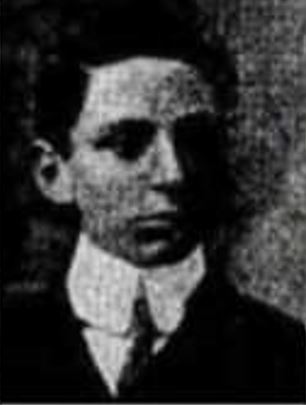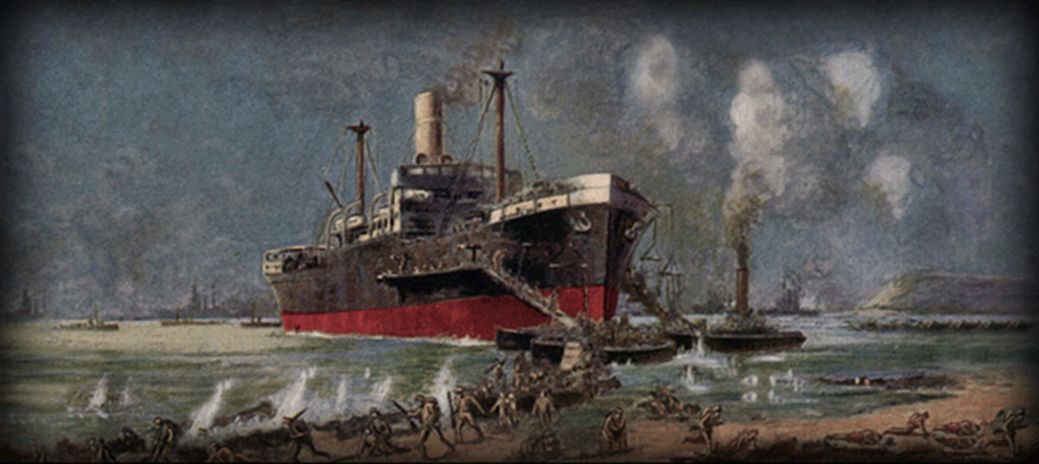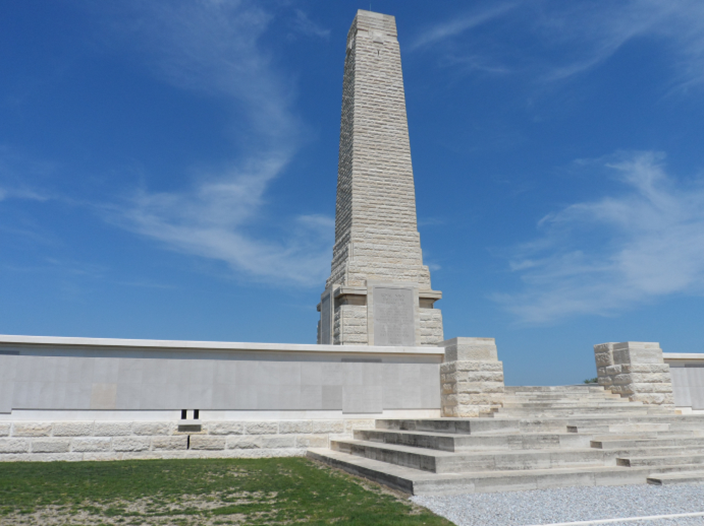ARTHUR KENNARD
Private, 8557, 2nd Battalion, Hampshire Regiment
Killed in Action during a charge on 6 August 1915 at Krithia, Turkey, aged 24
He has no known grave and is listed on the Helles Memorial, Panel 130

Arthur Kennard
Click to enlarge
Private Arthur Kennard was born in Hartfield on 21 July 1891, the son of Edmund Arthur Kennard (1861-1891) and Annie Maria Kennard (née Greenfield) (1860-1931). His father had been a Master at Ipswich School. He lived at Church Street, Hartfield and later Cairo Cottage, Southwater, near Horsham. He attended Southwater Council School. His mother was described as a dressmaker in the 1901 census and his elder sister Alice was given as a house parlourmaid in London. He also had a brother, Gilbert, born in 1889.
Arthur's pre-war occupation was given in the census as professional soldier. He enlisted in the 1st Hampshire Regiment on 1 January 1910 at Portsmouth. He served initially in Londonderry then Aldershot. He was later posted in August 1911 to Wynberg in South Africa and also served in Mauritius.
In August 1914 the 2nd Battalion, Hampshire Regiment, a regular battalion, were in Mhow, India. On 16 November 21 officers, 43 sergeants, 15 drummers, and 816 rank and file boarded the steamship, Gloucester Castle, and headed for England, arriving at Plymouth 22 December 1914. They moved to Romsey and on 13 February 1915 to Stratford-upon-Avon. They joined the 29th Division and were attached to the 88th Brigade at Stratford-upon-Avon and Warwick.

The 'V' Beach landing at Cape Helles, Gallipoli, 25 April 1915, at approx. 06.25 hours.
(Painting by Charles Dixon, from Royal Hampshire Regiment website)
Click to enlarge
They then headed for Gallipoli, landing at Cape Helles on 25 April. However, Arthur Kennard was not with them at this point. He was sent home from India with malarial fever in 1914 and was unable to join his Regiment to the Front in March 1915. He went to the Dardanelles in a draft in July 1915.
The day Arthur died — 6 August 1915 — was the first day of a series of attacks led by the British and Anzac troops on Helles. It was reported in The London Gazette despatches that the aim was to:
(1) To break out with a rush from Anzac and cut off the bulk of the Turkish Army from land communication with Constantinople.
(2) To gain such a command for my artillery as to cut off the bulk of the Turkish Army from sea traffic whether with Constantinople or with Asia.
(3) Incidentally, to secure Suvla Bay as a winter base for Anzac and all the troops operating in the northern theatre.
This battle became known as the "Battle of Krithia Vineyard". It was originally intended as a minor British action at Helles to divert attention from the imminent launch of the August Offensive, but instead, the British commander, Brigadier General H.E. Street, mounted a futile and bloody series of attacks that in the end gained a small patch of ground known as "The Vineyard".

The Helles Memorial, Gallipoli, Turkey
Click to enlarge
At Helles the attack of 6 August was directed against 1,200 yards of the Turkish front opposite the British right and right centre, and was to be carried out by the 88th Brigade of the 29th Division. Two small Turkish trenches enfilading the main advance had, if possible, to be captured simultaneously, an affair which was entrusted to the 42nd Division. It is likely that Arthur Kennard died in this assault. Of the 900 men who went into action on the assault on Krithia only 250 returned.

Document listing Arthur Kennard's effects
after his death, initially going to his mother.
(Source: De Ruvigny's roll of honour)
Click to enlarge
Arthur Kennard is listed on the war memorial in Hartfield.
Carol O'Driscoll
10 November 2016
Last updated 6 December 2021

